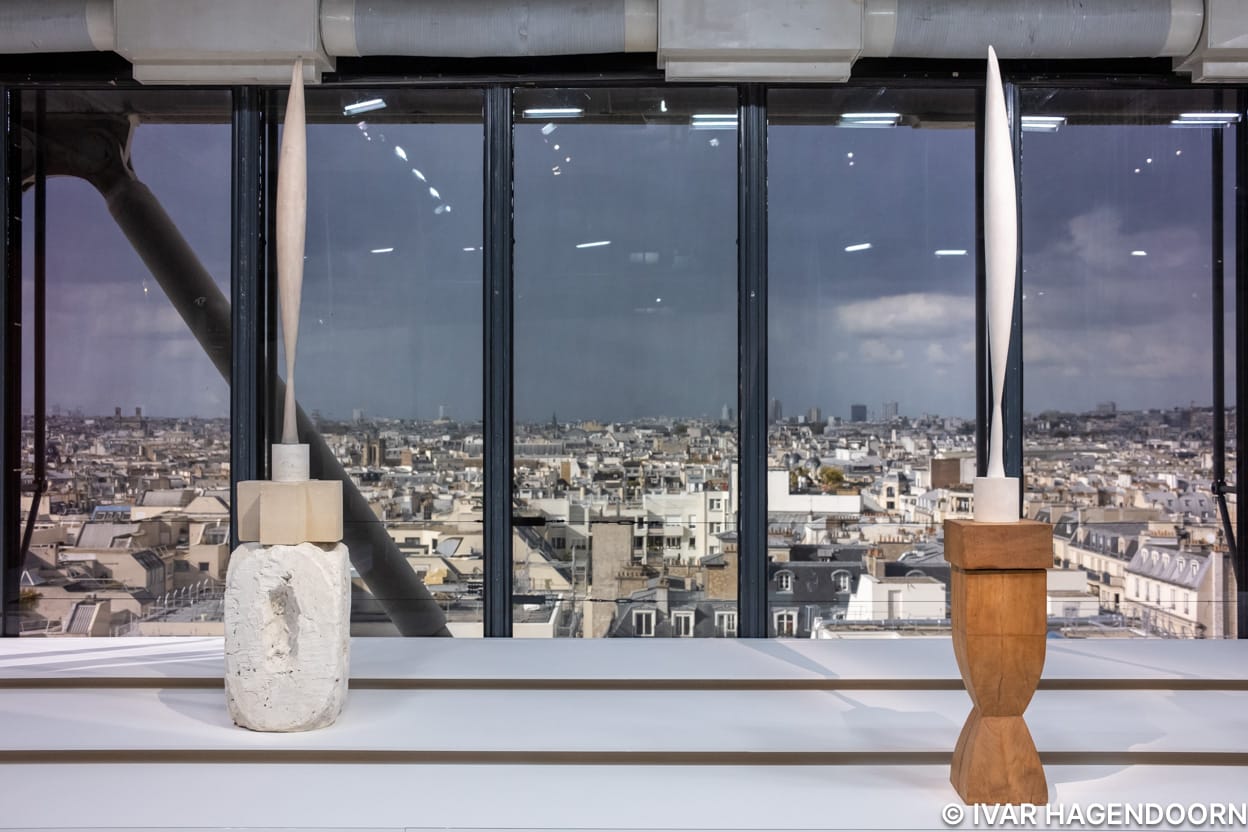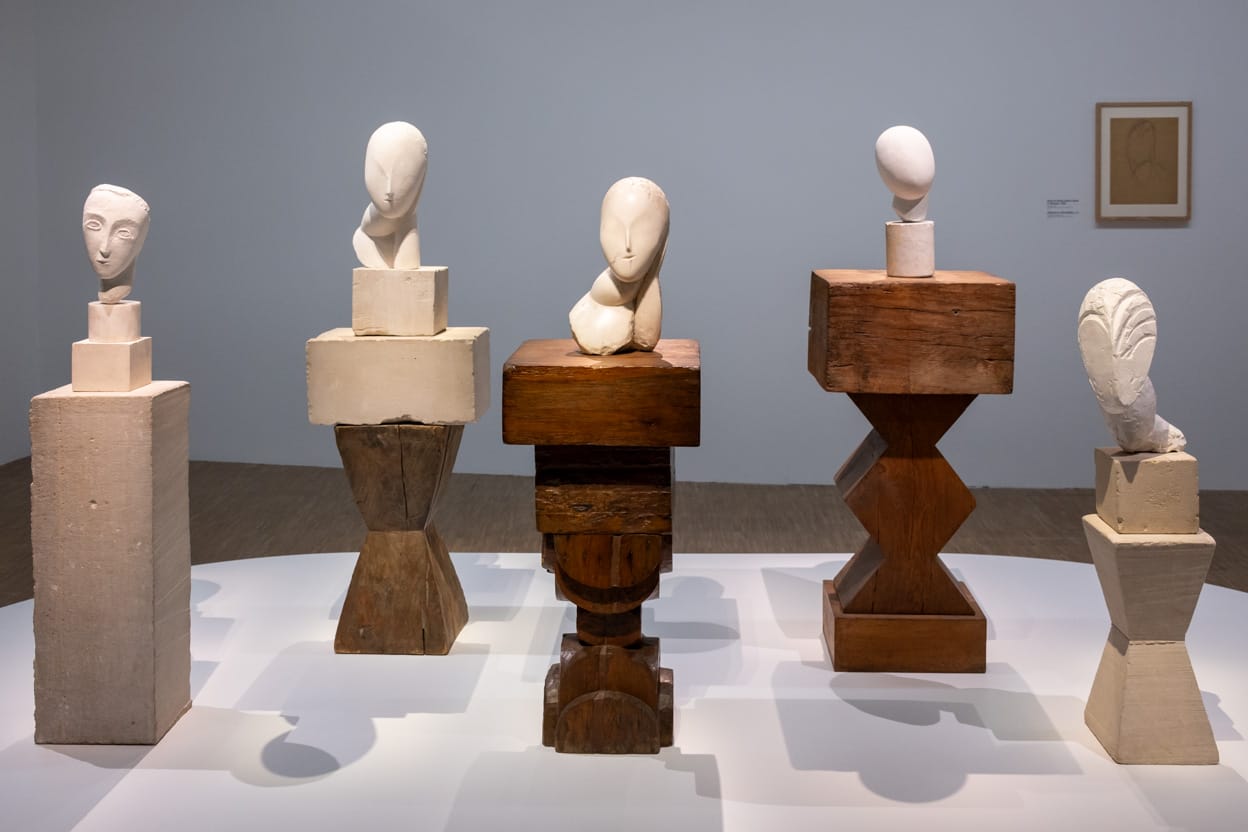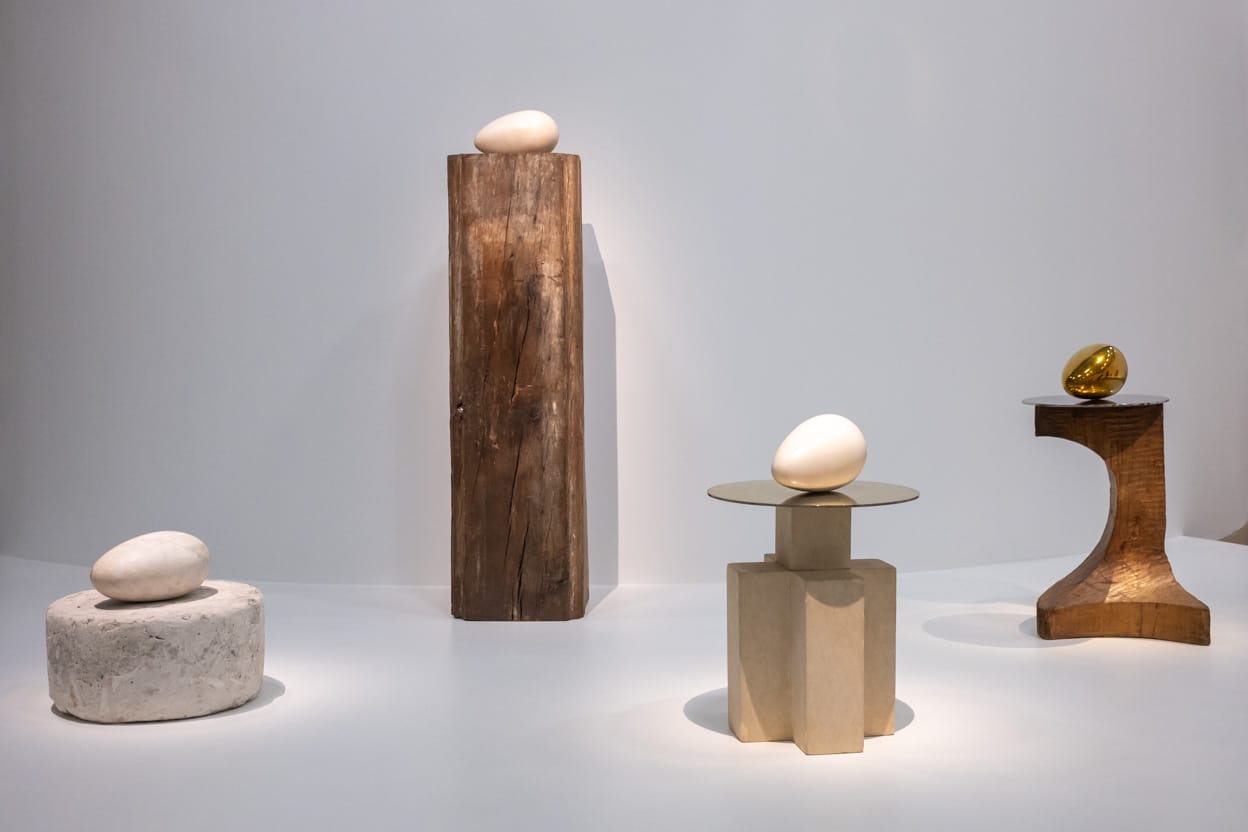
As one of the final acts before it closes for a five year refurbishment, early 2025, the Centre Pompidou has organized a large retrospective of Constantin Brancusi (1876-1957). In 2020 I visited a Brancusi retrospective in Brussels, but the present exhibition is much larger and much better, because it gives Brancusi’s sculptures the space they deserve.
The Centre Pompidou was able to obtain a number of significant loans from other institutions to enhance its own extensive collection of works by Brancusi. And so there are two different versions of “Le Baiser” (The Kiss) and “La muse endormie” (Sleeping Muse) and a marble and a bronze version of “Le commencement du monde” (The Beginning of the World).
Brancusi revolutionized sculpture by breaking with modelling in favour of direct carving and polishing and by his ongoing search for the essence of things resulting in serene, minimalist shapes.
The exhibition opens with three large plaster versions of “Le Coq” (The Rooster). This is followed by a room with both early and later works. I particularly enjoyed a display with “children’s heads” (Tête d’enfant endormi) from different stages of Brancusi’s career, which clearly show his path towards abstraction. This exhibit alone was worth the visit. The next room presents a richly documented chronological overview of Brancusi’s life, with photographs, letters, drawings and fragments of Brancusi’s favorite music, from Romanian folk songs to Satie and jazz.
At the center of the exhibition is a reconstruction of Brancusi’s former studio in Montparnasse, where he lived and worked from 1916 until his death and which he conceived as a work in itself. He had carefully crafted nearly everything by hand, from the tables and stools to the fireplace. For years he endlessly moved his works around to create a perfect ensemble. Whenever he sold a work he replaced it with a plaster or bronze cast so as to preserve the configuration. Brancusi bequeathed his studio and his archive to the French state after his death on the condition that it was reconstituted. In 1997, a reconstruction of the studio was installed on the square opposite the Centre Pompidou. For the duration of the exhibition its contents have been temporarily moved to the Pompidou’s top floor where they can be viewed from three sides.

The next two rooms showcase Brancusi’s experiments with the masculine and feminine form and the portraits he made of his friends and muses. Brancusi admonished people not to look for obscure formulas or mysteries in his work, “I am giving you pure joy.” And what a joy it is to see a large selection of his portraits and being able to view them from all sides. I particularly enjoyed seeing different versions of Mll Pogany and Danaïde side by side.
The following room, Flight, is an absolute masterstroke and one of the highlights of the exhibition. Several of Brancusi’s “birds in space” are displayed in front of the Pompidou’s windows against the skyline of Paris. As I wrote in my review of the Brancusi exhibition in Brussels, four years ago, the bird needs to fly. The early evening sun and some rain clouds in the distance made for a particularly dramatic setting. Sitting on a wooden bench in front of these sculptures with the skyline of Paris in the background was a moment of pure bliss.

Brancusi used to craft the rather monolithic plinths for his sculptures himself, which raises the question where a sculpture begins and ends. On several occasions Brancusi turned the plinth into a sculpture in its own right as can be seen in a quite wonderful ensemble. Brancusi was also fascinated by reflection and motion. He once invited the Romanian dancer Lizica Codreanu to his studio to perform among his sculptures.
In the 1930s and 1940s Brancusi turned his attention to animals, from chickens and swans to fish and turtles. As in his portraits he sought to simplify the form to the point where only a distinctive feature remained, such as the zigzag of a chicken’s comb. The exhibition ends, appropriately, with Brancusi’s “endless columns”, representing the axis mundi, connecting earth and sky.
It so happens that, back in my student days, I visited the last great Brancusi retrospective at the Centre Pompidou, some thirty years ago. So don’t miss this opportunity or else you may have to wait 25 years or more before you get another chance to see such an exquisite selection of works by Brancusi.
Brancusi is at the Centre Pompidou, Paris until 1 July 2024.
Links
My review of the Brancusi retrospective at BOZAR in Brussels.